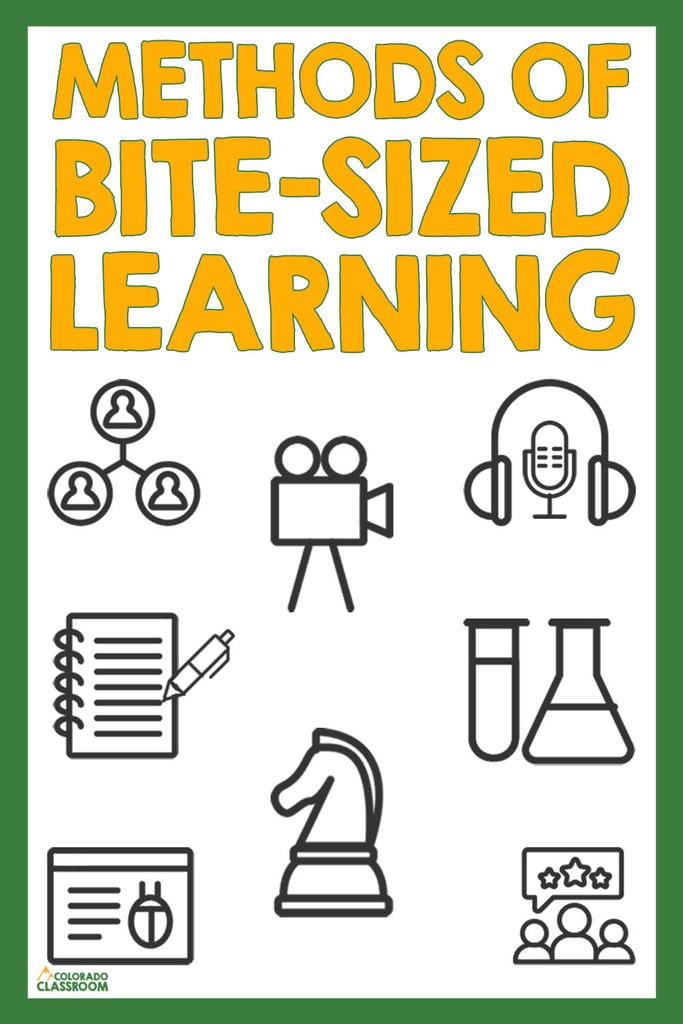The Best of Bite-Sized Learning – Week Two
We’re back to look at the methods of bite-sized learning. Last time we defined what bite-sized learning is and how it began. This week we’ll look at many of the different types and styles of bite-sized learning. Then we’ll see how to use them in the classroom.

There are many different ways to implement bite-sized learning into the classroom, especially at different age levels. This video will show you some of the most popular and most common ways to introduce bite-sized learning into yours. Let me know in the comments which idea is your favorite!
Infographics
Infographics are one of the go-to methods of bite-sized learning. Many people like and process pictures well. Use colors, bold graphics, icons, and more to help your information stand out.
Podcasts & Quick Videos
Some of the more popular methods of bite-sized learning include podcasts and quick videos. Many people process visually or auditorially. Giving them a learning opportunity that fits into how they process is a win-win! Keep podcasts and videos under 20 minutes, better yet, 15. Showing quick videos that are just clips of shows or movies is even better. Two to five minutes is ideal for these.
Short Paragraphs
When writing has to be a part of the agenda, or students have to read, keep things short. Rotate readers every two minutes and see how much students can write in five minutes or less.
Play a Game
Games are a great way to learn or to assess learning. Attention spans usually last a little longer with games as well. Keep each round to 10-15 minutes, or shorter, to be ideal.
5-Minute Science Experiments
Another great method of bite-sized learning is the 5-minute science experiment. These quick experiments capture the learner’s attention and make science fun and interesting. Plus, it gives them time to write up their findings in class quickly.
Flashcards & Quick Quizzes

Lastly, use flashcards with your students to focus on one objective or standard. Keep the sets short and targeted, and aim for 10 minutes or less of practice before moving on. Flashcards are a great example of a quick quiz which is another bite-sized method. These constant formative assessments should be done to assess understanding frequently. Other examples include thumbs up/down, response cards, sticky notes, stoplights, mastery charts, and more.
Next Post
Make sure to return next week to see how I used bite-sized learning in my 6th-grade math classroom.


Pingback: Bite-Sized Learning Series: Week One - The Colorado Classroom
Pingback: Bite-Sized Learning Schedules - The Colorado Classroom